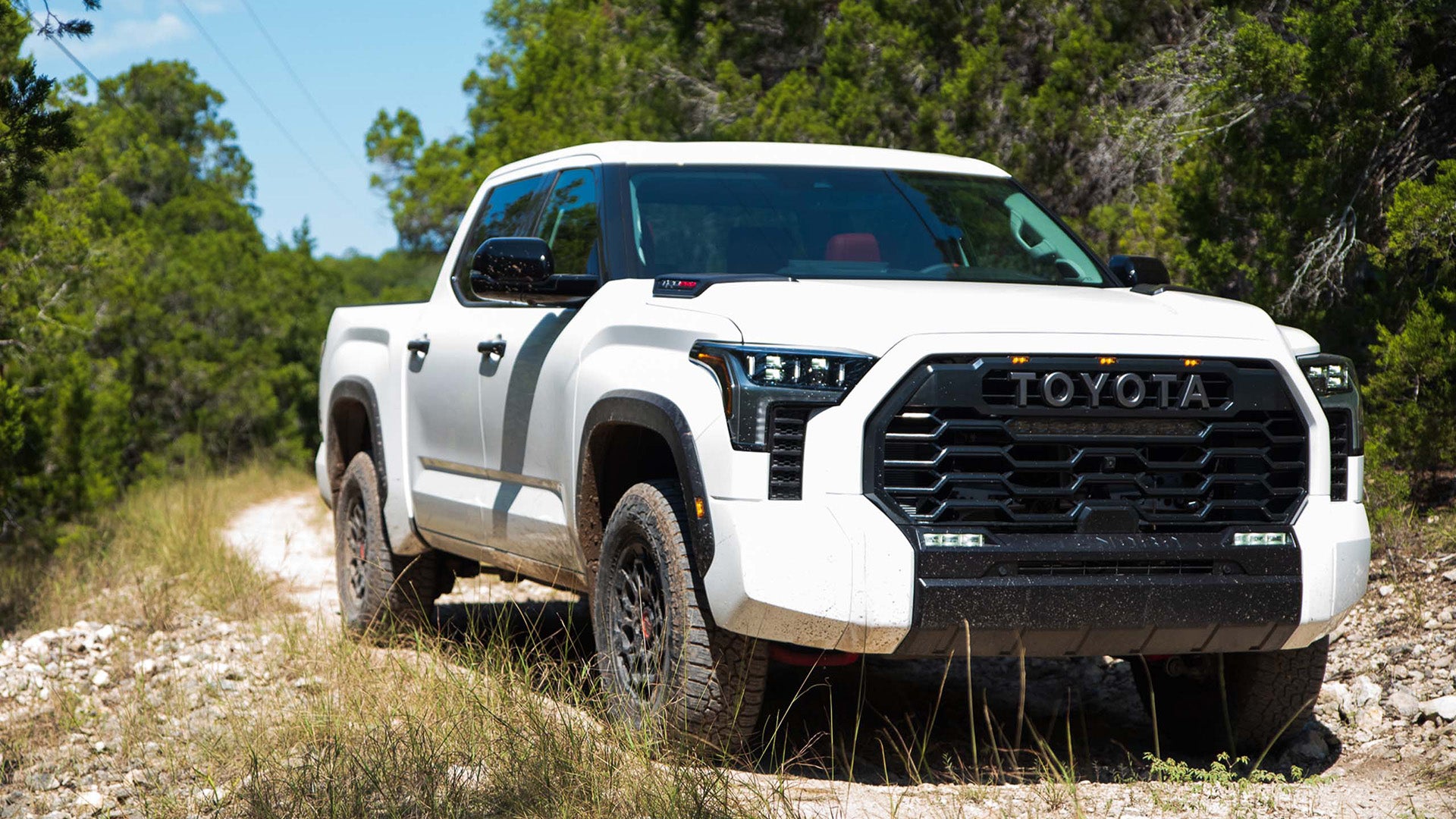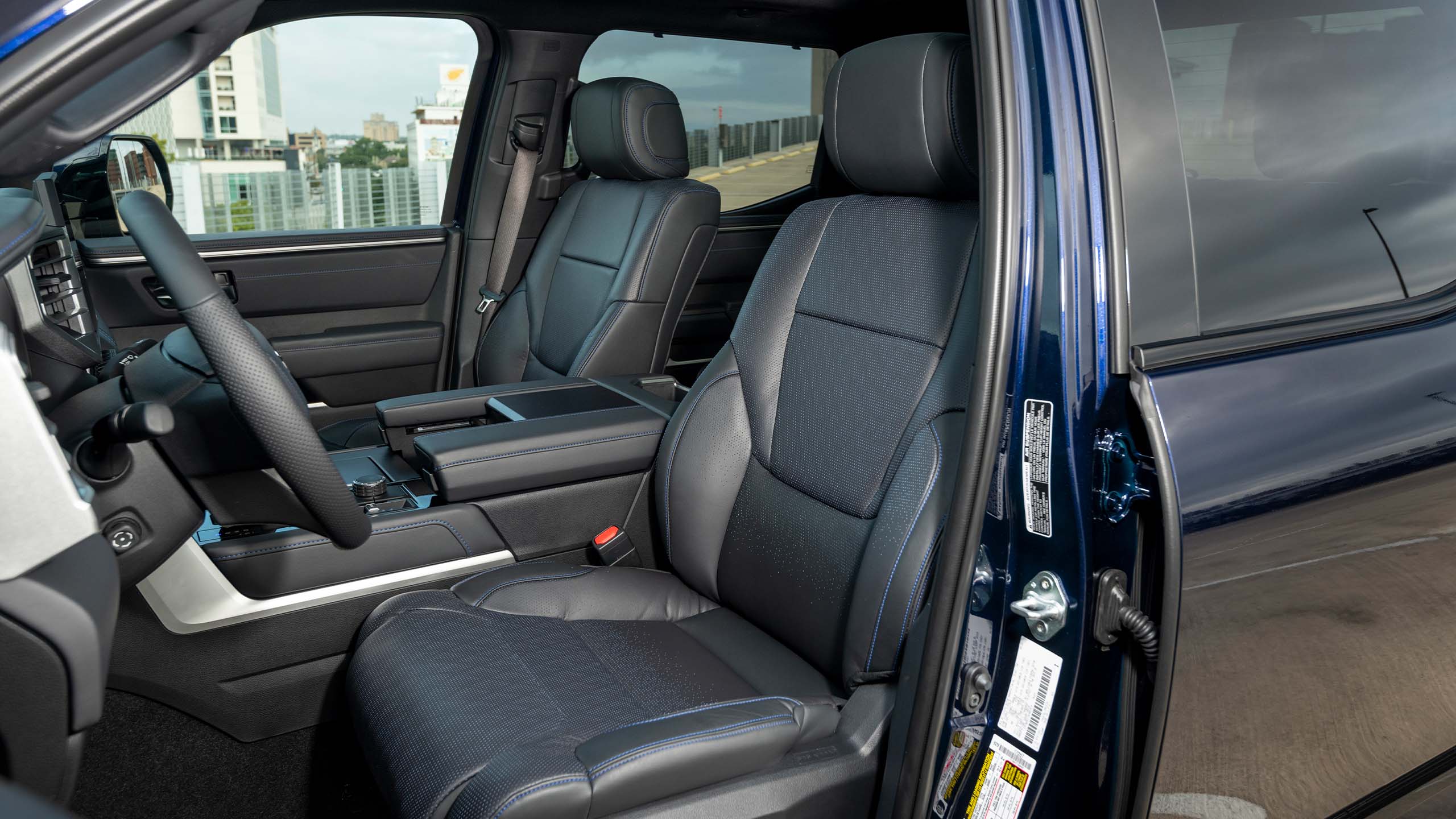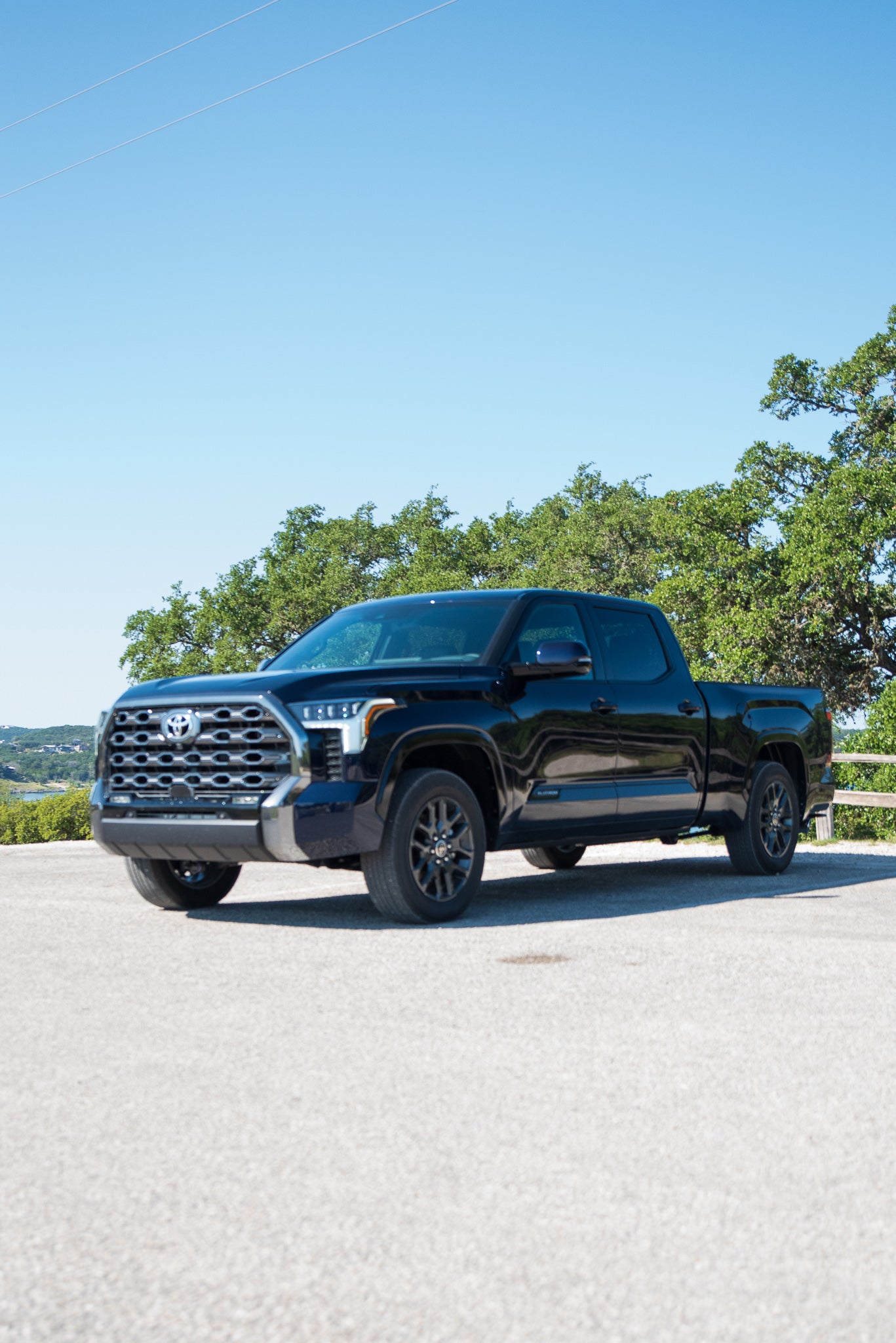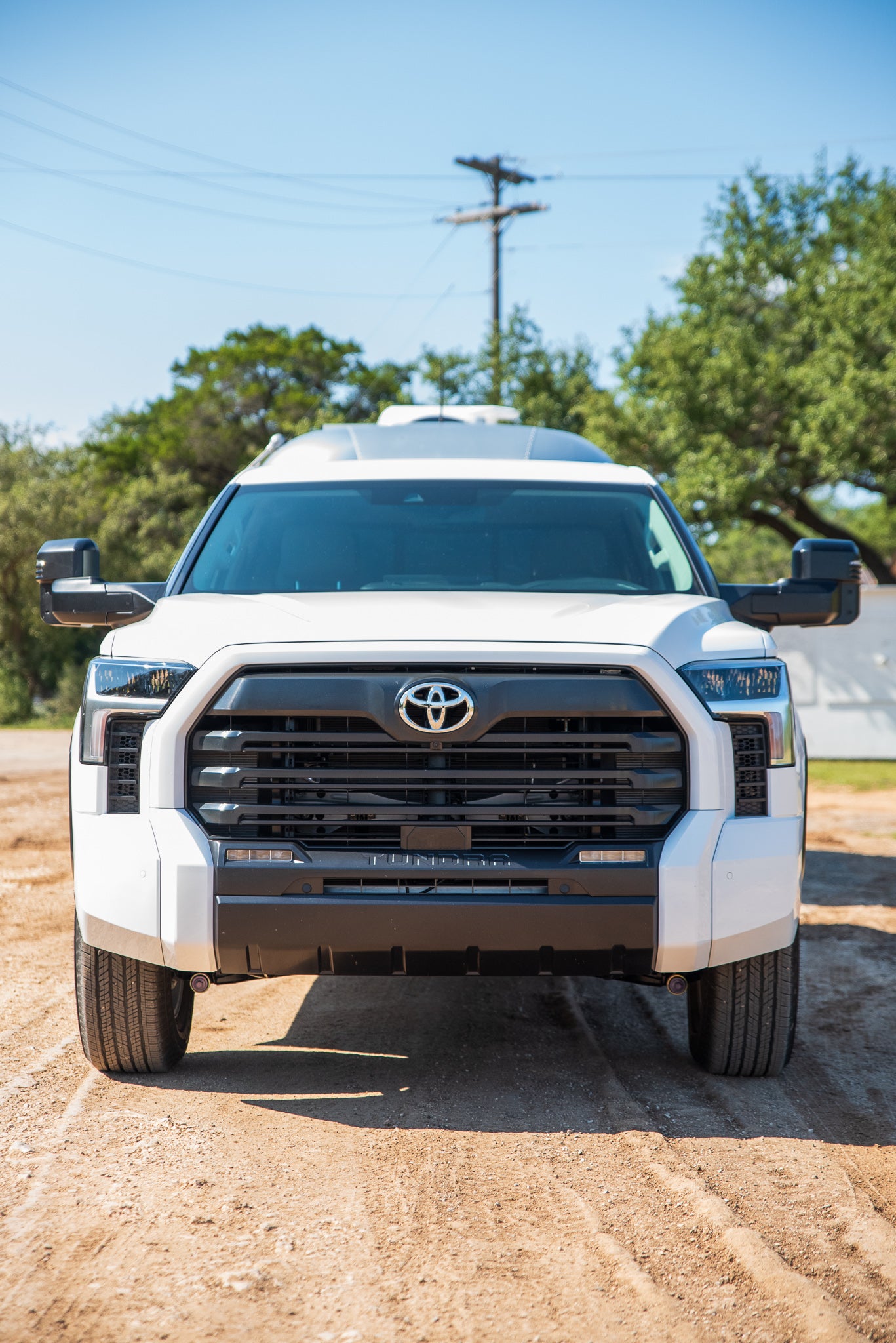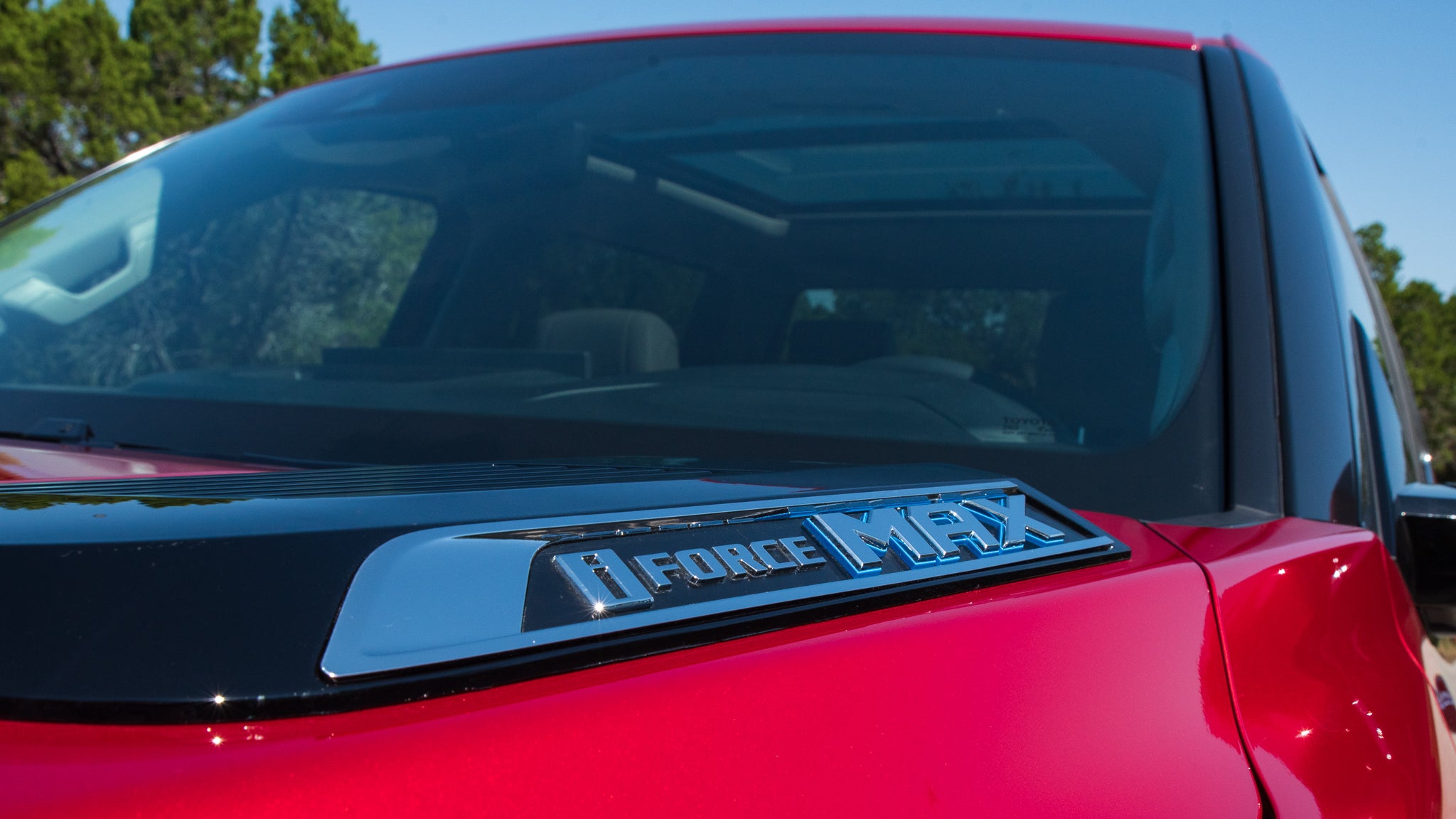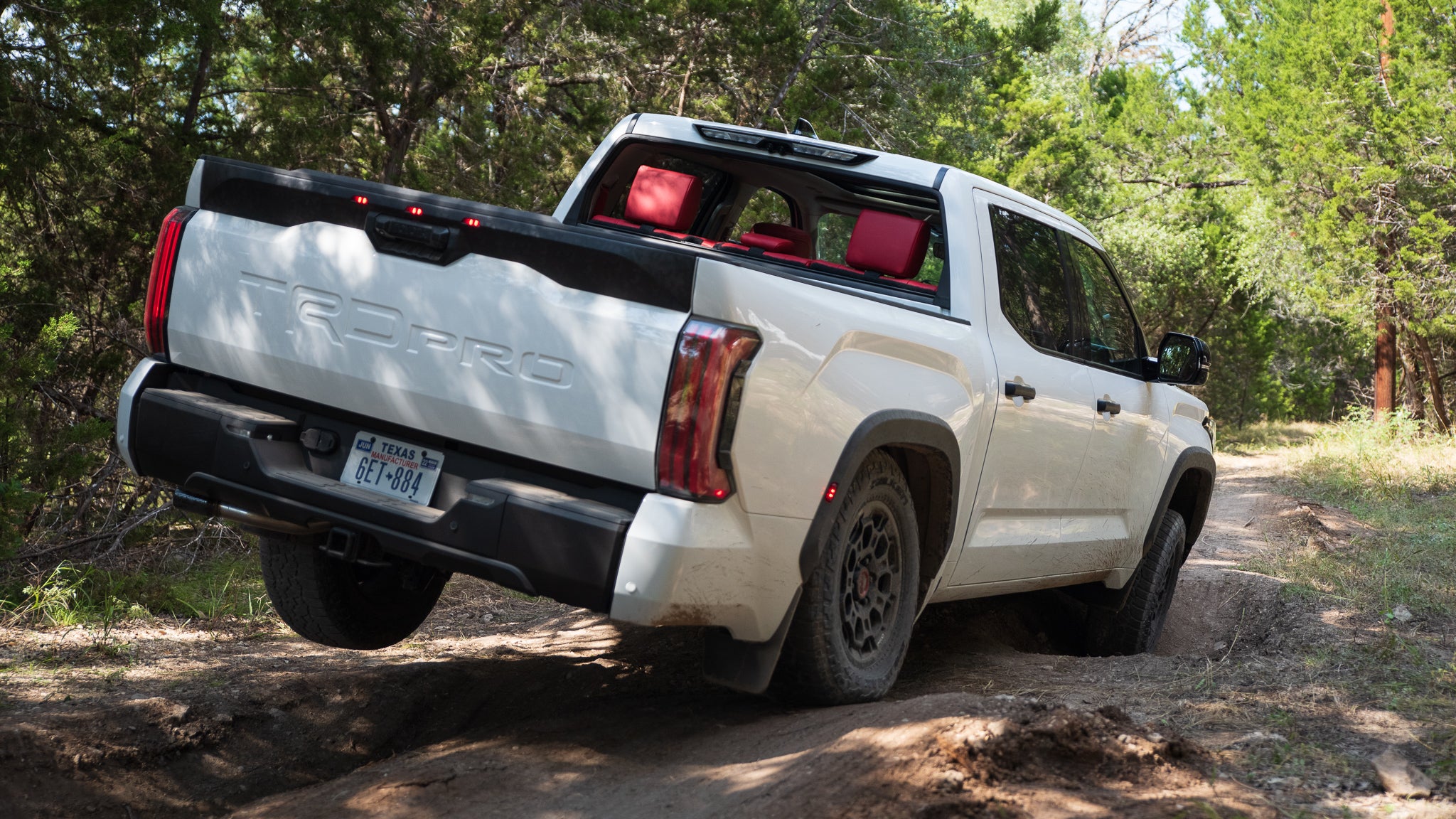Toyota isn't new to trucks. That said, there hasn't been a truly new Toyota truck in some time—think 15 years, in the Tundra's case. The second-gen full-sizer is riding out its tenure and will soon be replaced by the 2022 Toyota Tundra that's entirely new. And I'm not just talking about the design, the engine, or the suspension—I'm talking about all of it. After driving it on the road, off the road, and with a couple of trailers attached, I can decisively tell you it's a super-solid truck that people should fall for, especially Toyota people.
Fewer brand fans are more loyal than Toyota diehards, and I'd wager they're even more dedicated than Jeepers, which we all know says a lot. They've long defended the Tundra even though Ford, Chevy, Ram, and so on have all recently updated their trucks. The half-ton pickup segment is growing more than anyone thought it could and it's always been huge in the United States. So, it's time that Toyota kicks out the old and brings in the new with totally revamped styling, a legit modern interior, coil-spring rear suspension, and torquey twin-turbo powertrains with an available hybrid upgrade that's standard on the four-wheeling TRD Pro trim.
2022 Toyota Tundra: By the Numbers
- Base price (as tested): TBA
- Powertrain: 3.5-liter twin-turbocharged V6 | 10-speed automatic | rear-wheel drive or four-wheel drive
- Horsepower: 389 @ 5,200 rpm (348 on base SR model)
- Torque: 479 lb-ft @ 2,400 rpm (405 pound-feet on base SR model)
- Max payload capacity: 1,940 pounds
- Max towing capacity: 12,000 pounds
- Off-road angles: 21˚ approach, 24˚ departure
- Ground clearance (4WD): 9.4 inches
- Estimated fuel economy (4WD): 18/23/20 mpg (17/22/19 mpg)
- Quick take: A respectable upgrade over the old V8 with more horsepower and, importantly for towing, way more torque. While not quite as punchy as Ford's 3.5-liter EcoBoost, it's still a solid performer that's especially capable as a base engine.
2022 Toyota Tundra Hybrid: By the Numbers
- Base price (as tested): TBA
- Powertrain: 3.5-liter twin-turbocharged V6 hybrid | 10-speed automatic | rear-wheel drive or four-wheel drive
- Horsepower: 437 @ 5,200 rpm
- Torque: 583 lb-ft @ 2,400 rpm
- Max payload capacity: 1,680 pounds
- Max towing capacity: 11,450 pounds
- Off-road angles (TRD Pro): 21˚ approach, 24˚ departure (26.2˚ approach, 24.2˚ departure)
- Ground clearance (TRD Pro): 8.5 inches (9.0 inches)
- Estimated fuel economy: TBA
- Quick take: All that torque makes for an impressively quick truck, whether you're taking off from a stop or cruising at speed. It's perfectly matched for the new-and-improved TRD Pro.
The Tundra's design is divisive, that I understand, but you've likely made up your mind on that already. I'm here to tell you how it drives, rides, and hauls because it's now a totally different truck than the Tundra we've known for so long. Subjective gripes aside, Toyota has done a stellar job of developing a new pickup that doesn't chase numbers just for the sake of it. It's one that's comfortable and resoundingly quick in hybrid form. Let's get to it.
What's New for 2022
Everything's new or updated, though I want to start with how Toyota is championing the Tundra as a true flagship here in America, which hasn't always been the case. It's rolling out a slew of firsts with this full-size truck, and we expect the manufacturer's other large vehicles—from the Tacoma to the 4Runner and Sequoia—to take plenty of notes from it. This will be possible because of the body-on-frame Toyota New Global Architecture-F (TNGA-F).
The 300 Series Land Cruiser rides on this platform overseas, but the Tundra is our introduction to it Stateside. It allows for all these upgrades that separate the next-gen pickup from the outgoing model, meaning it's now got multi-link, coil spring suspension out back instead of the leaf springs we'd always seen on Toyotas before. It's even got available adaptive air coils for an extra cushy ride and load-leveling when towing a trailer. Really, right now, the only other competitor in this class using coil springs is the Ram 1500. Yes, I know the Ford Raptor has coils now, but the normal F-150 doesn't, so.
A 3.5-liter, twin-turbo gas V6 making 389 horsepower and 479 pound-feet is standard on every trim above the base SR, which gets a detuned version producing 348 hp and 405 lb-ft. The more potent gas-only application provides an improvement of eight hp and 78 lb-ft of torque versus the outgoing 5.7-liter V8. Those numbers aren't far off the Ford F-150's 3.5-liter EcoBoost, which makes 400 hp and 500 lb-ft, though where Toyota gains its power advantage is in the hybrid department. An electrified powertrain using the same base engine and a permanent magnet synchronous motor swings with 437 hp and 583 lb-ft of twist—that's seven more ponies and 13 more torque than the F-150's PowerBoost hybrid. What's more, it's standard on the TRD Pro.
Regardless of the unit you choose, it'll send power through a fresh 10-speed automatic transmission. Two- and four-wheel drive are available, of course, and this time, there's an available locking rear differential. Neat!
The interior's another big talking point, mainly because other companies have stepped up in that respect over the past decade and a half, believe it or not. Now it's the Tundra's turn to go premium, which it does with trims like the Platinum and 1794 Edition; those both existed before but they're way more upscale now. Headlining these modernization efforts is the available 14-inch infotainment screen that's standard on those two upper trims and optional on the lower SR5 and Limited models. It runs an entirely new operating system that's shared with Lexus and has a handy suite of apps to make your life easier and your in-truck experience more enjoyable.
'Drives Like a Truck' Doesn't Have to Mean Rough
For comparison's sake, I snuck in about an hour's worth of seat time in the outgoing Tundra first. It was a TRD Pro with the 5.7-liter V8, which felt powerful enough but not particularly impressive, given its displacement and grunt from the upgraded exhaust. The ride in that truck was more, let's say, traditional and gave me a clear benchmark for the 2022 model: It had to be better than that, or else I'd call it a flop.
Coming from someone who's used to leaf spring suspensions, and quite honestly, rough-riding old trucks, the all-new Tundra is better because of its coil springs. I know you wanna hear how powerful it is and how it hauls—and trust me, I'm getting there—but the suspension is key, first in how the Tundra reacts to the road and also how it handles that increase in power to help boost max towing to 12,000 pounds. Typically, a better ride and more work capabilities don't go hand in hand, but that's what has happened here.
No matter the trim, the 2022 Tundra is simply smoother than the model it succeeds—even if it's a new SR5 compared to the old Platinum. It handles confidently with electric power steering that's no less communicative than you'd expect from a big truck, and the dual-piston front, single-piston rear brakes with 13.9- and 13.6-inch respective discs have a healthy amount of bite. You're not going to get worn out driving this thing on long trips—coming from someone who drove it through San Antonio traffic around 6 p.m. on a weekday, that's saying something.
It's Got the Juice
That 3.5-liter, twin-turbo, gas-only V6 is exceptional for a base engine, even if it doesn't have as much punch as Ford's comparable power plant. Since peak torque comes on at 2,400 rpm, it pulls away from stoplights in a hurry and can keep accelerating up lofty grades, even with a load. It really shines, though, when it's paired with the Tundra's hybrid system.
Adding a 1.87-kWh battery and a transmission bell housing-mounted electric motor wakes this truck up. I drove a Limited grade with the hybrid iForce Max power unit immediately after my first spin in the gas-only version and there's no denying the difference—heck, it's got 48 more hp and a 104-lb-ft advantage. When a vehicle that weighs more than 6,000 pounds boogies like this, you can't help but think that old V8 is for the birds.
Given that heft, and the fact that a crew cab with the shortest bed option is still nearly 19.5 feet long, it wouldn't be fair to say it drives like a sports car. Still, it's as eager to accelerate as one—so much so that I really couldn't exceed half throttle in 45 mph zones before reaching the speed limit. It's got punch both high and low in the rev range, outdoing every other half-ton truck in terms of torque save for the wild Hellcat-powered Ram TRX.
The one thing I can't help but wish for is some sort of bed-mounted mobile inverter like the F-150 hybrid's 7.2-kW Pro Power Onboard system. It's hard to guess why Toyota hasn't gone the same route with its battery-assisted truck, especially since its electric power source is a tad larger than the Blue Oval's—1.87 kWh compared to 1.5 kWh in the F-Series. It would kick the Tundra's usability up three or four notches and cater to the type of customer it claims to—and mostly does—focus on. If this is a truck for outdoor fanatics, overlanders, and the like, then having a base camp that can double as a rolling power bank would be undeniably handy.
I'll infer that the main prohibitor is cost, both on the manufacturer's side as well as the customer's. I'm anxious to hear how much this hybrid upgrade will set buyers back when the 2022 Tundra goes on sale late this year; it's a $2,500 option on the F-150 and I wouldn't be surprised to see the same on the Toyota.
Not Chasing Numbers
I don't think it's fair to say that modern trucks are worse because they shoot for the moon with max towing and payload. Still, it sometimes keeps them from being as well-rounded as they could be. This is only partially solved by building trucks in a plethora of trims with seemingly dozens of equipment packages and drivetrain combos. Whereas each manufacturer might make the perfect truck for you, it's not really helpful when dealers don't stock that truck on their lots. A big part of me hopes that won't be the case with the Tundra, and I'm pretty confident in that—largely because its capabilities are pretty standard from the SR5 trim on up. The base SR caps out at 8,300 pounds of towing, and I'd say that's at least partially due to the power deficit.
Regardless, your average half-ton pickup driver isn't towing more than 12,000 pounds. They're rarely hauling over half that much, truth be told. From a livability perspective, it's not always worth it to sacrifice features that make the daily driving experience that much better just to look good on paper. I'm talking mainly about the suspension here, and I genuinely think we'll see the other truck manufacturers join Toyota and Ram in building coil-sprung trucks sooner than later.
Also, by offering so many of these goodies as standard, entry- and mid-level buyers aren't left to deal with some third-tier running gear that feels lesser than. SR and SR5 Tundras are equipped with an eight-inch infotainment screen as standard, meaning the hotly hyped 14-inch display is optional in those cases, though Toyota told me that the latter will be the predominant equipment in dealer-stocked trucks. That's a plus because that system is pretty slick and a big step up from the last-gen, although there's still room for improvement here and there. The voice recognition is spotty and doesn't always understand more elaborate commands; wireless Apple CarPlay and Android Auto almost make up for that, though.
While Toyota hasn't announced pricing yet, it's safe to imagine a price hike for the 2022 Tundra. This is a new truck, after all, and the outgoing one has been around long enough to get its learner's permit. Expect it to be priced competitively with F-150s, Chevy Silverados, and Ram 1500s in similar specs, though the 'Yota will have a higher entry point since it's not offered in barebones, single-cab work spec. If I had to hazard a guess, I'd say it'll start around $37,000 after delivery, but don't hold me to it.
The 2022 Tundra is a pickup worth buying, no disclaimers needed. It's especially valuable as a daily driver that's totally capable of working weekends, whether that means pulling a dual-axle camper or a matching set of UTVs. You're not likely to overdo it in a Tundra, and if you somehow manage that, it might be time for a bigger truck. Here's to hoping these can last a million miles like some of the old ones could.
Keep an eye on this space for more upcoming words on the truck's towing and hauling capabilities, as well as the 2022 Tundra TRD Pro.
Got a question about the 2022 Toyota Tundra? Drop a comment below or contact the author directly: [email protected]
